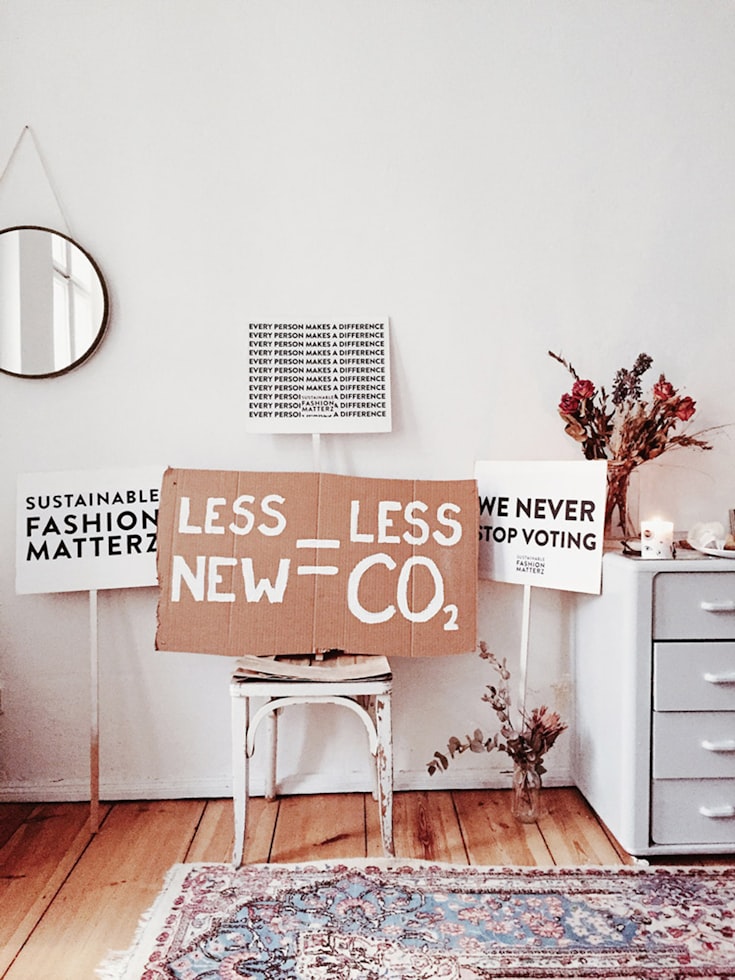In the modern era, fashion has become a part of our daily lives. However, fast fashion has led to environmental damage and exploitation of the workforce, which casts a shadow on the glamour of fashion. The world has seen an urgent need for a more sustainable approach towards fashion, and eco-friendly clothing is emerging as a viable solution.
Sustainable fashion is not just a trend; it is an essential movement that is revolutionizing the fashion industry’s ideologies. The benefits of eco-friendly clothing are numerous, ranging from reducing global warming to minimizing waste production to ending exploitation. The clothing industry is responsible for a significant amount of pollution, and sustainable fashion aims to reduce this impact.
However, switching to sustainable fashion is not an easy process. It comes with several challenges, such as the high cost of production, limited availability of eco-friendly materials, and a lack of customer awareness. It presents a dilemma for many, who are keen to contribute to sustainable fashion, but are unable to do so due to limited resources and knowledge.
One of the most significant challenges that the sustainable fashion industry faces is the lack of availability of eco-friendly materials. While there are natural, organic, and recycled materials available, their production is often limited, making them expensive and difficult to acquire on a large scale. As a result, many sustainable fashion brands struggle to create a product that is affordable without compromising their eco-friendly values.
Despite the challenges, the concept of sustainable fashion is gaining popularity, and many brands have embraced this approach. Consumers are becoming more aware of the environmental impact of their clothing choices and are making a conscious effort to shift towards eco-friendly clothing. This shift reflects the increasing demand for sustainable fashion, creating a viable market and paving the way for a sustainable fashion industry.
In conclusion, sustainable fashion offers a solution to the environmental damage caused by fast fashion, and its benefits are undeniable. However, the challenges it presents are equally significant. The journey towards a sustainable fashion future will require collaboration between fashion brands and consumers, who must work together to make fashion ethical, conscious, and environmentally conscious.
Introduction
Sustainable fashion, also known as eco-fashion, is a growing trend that aims to address the environmental and social impacts of the fashion industry by promoting sustainable and ethical practices. While the concept is still relatively new, it is gaining popularity as more consumers become aware of the negative impacts of fast fashion on the environment and society. In this article, we will explore the benefits and challenges of eco-friendly clothing and why sustainable fashion is a crucial step towards a more sustainable future.
The Benefits of Eco-Friendly Clothing
Eco-friendly clothing offers numerous benefits that go beyond reducing the environmental impact of the fashion industry. Firstly, sustainable fashion aims to provide fair wages and safe working conditions for workers, often empowering marginalized and disadvantaged communities. Additionally, eco-friendly clothing is made from sustainable materials that do not harm the environment, reducing the carbon footprint of the textile industry. Furthermore, sustainable fashion promotes conscious consumption by encouraging consumers to buy high-quality, long-lasting items that can be reused and repurposed, reducing waste and saving money in the long run.
The Challenges of Eco-Friendly Clothing
Despite its many benefits, sustainable fashion also faces several challenges that need to be addressed. The first challenge is the lack of awareness among consumers about the environmental and social impacts of the fashion industry. Many consumers are still unaware of the impact of fast fashion on the environment and the workers who produce them. Secondly, sustainable fashion can be more expensive than fast fashion due to the cost of using sustainable materials and ethical production practices. This can be a barrier for many consumers, especially those with lower incomes and limited access to sustainable fashion options. Lastly, the lack of standardization in sustainable fashion can make it difficult for consumers to differentiate between truly sustainable products and those that are not.
The Future of Sustainable Fashion
The future of sustainable fashion is both challenging and exciting. On the one hand, the fashion industry is a significant contributor to environmental and social issues, and change is necessary to address these problems. On the other hand, sustainable fashion presents an opportunity for the fashion industry to reinvent itself in a way that is both environmentally and socially responsible. With increased awareness of the negative impacts of the fashion industry, more sustainable fashion options are emerging, and consumers are demanding transparency and accountability from fashion brands. As technology advances, there is hope that sustainable and ethical production practices will become more accessible, affordable and widespread.
Tips for Buying Sustainable Fashion
If you are interested in buying sustainable fashion, there are several essential tips to keep in mind. First, do your research and look for brands that prioritize sustainability and ethical production practices. Secondly, focus on quality over quantity and invest in pieces that are made to last. Thirdly, consider buying second-hand or from vintage shops, as this is a great way to reduce waste and support the circular economy. Lastly, be mindful of your own consumption patterns and aim to buy less and choose well.
Conclusion: Why Eco-Friendly Clothing Matters
Sustainable fashion is an essential step towards creating a more sustainable future. While it faces several challenges, the benefits of eco-friendly clothing are clear, ranging from reducing the environmental impact of the fashion industry to promoting fair working conditions for workers. As consumers become more aware of these benefits, they can play a significant role in driving demand for more sustainable fashion options, encouraging brands to adopt more ethical and sustainable production practices.
Summary
The world needs a more sustainable approach to fashion, and eco-friendly clothing is becoming a viable solution. Sustainable fashion is revolutionizing the fashion industry’s ideologies by reducing global warming, minimizing waste, and ending exploitation. However, the switch to sustainable fashion is not easy due to challenges such as the high cost of production, limited availability of eco-friendly materials, and a lack of customer awareness. Despite these challenges, sustainable fashion is gaining popularity, and consumers are becoming more conscious of the environmental impact of their clothing choices, creating a viable market and paving the way for a sustainable fashion industry. Collaboration between fashion brands and consumers is essential for a sustainable fashion future.

FAQ
What is sustainable fashion, and why should we care about it?
Sustainable fashion refers to clothing that is made and sourced responsibly, with a focus on minimizing harm to the environment and supporting fair labor practices. This includes the use of organic, recycled, or biodegradable materials, as well as reducing waste and carbon emissions throughout the production process.
Choosing sustainable fashion has several benefits, including reducing the negative impact on the environment and supporting ethical labor practices. It also promotes the use of natural materials and reduces the amount of waste going to landfills. Consumers can help drive the demand for sustainable fashion by supporting companies that prioritize sustainable practices and being mindful of the environmental impact of their fashion choices.
What are some challenges of sustainable fashion?
One of the biggest challenges of sustainable fashion is the higher cost associated with using eco-friendly materials and production processes. This is because sustainable fashion requires a more thoughtful approach to production, which can be more labor-intensive and time-consuming. However, many sustainable fashion companies are working to find innovative solutions to reduce costs and make sustainable fashion more accessible to the general public.
Another challenge is the difficulty of regulating the industry and ensuring that all companies are following sustainable and ethical practices. This requires transparency from companies about their production methods and the impact of their products on the environment and society. Additionally, consumers may be hesitant to switch to sustainable fashion due to a lack of awareness or perceived inconvenience.
What is the impact of sustainable fashion on the economy?
Sustainable fashion can have positive economic effects by creating jobs in the sustainable fashion sector and supporting local and fair trade practices. By choosing sustainable fashion, consumers are supporting companies that prioritize ethical labor practices and provide fair wages to their workers. Additionally, sustainable fashion can stimulate innovation and creativity in the fashion industry by encouraging the use of eco-friendly and innovative materials and production methods.
However, switching to sustainable fashion may require some initial investment by both consumers and companies, which can be a barrier in the short term. Nevertheless, as more consumers demand eco-friendly and sustainable products, the market will likely shift to reflect this, creating more opportunities for growth and development in sustainable fashion and related industries.
What can consumers do to support sustainable fashion?
Consumers can support sustainable fashion by actively seeking out eco-friendly, fair trade, and locally produced clothing options. This can include buying from sustainable fashion brands, shopping at thrift stores or clothing swaps, and donating clothing to organizations that promote sustainable fashion. It can also mean buying high-quality items that will last longer and avoiding fast fashion trends.
Consumers can also educate themselves about sustainable fashion and the environmental and social impact of their fashion choices. This can involve reading labels and researching companies’ sustainability practices before making a purchase. Supporting sustainable fashion goes beyond just buying eco-friendly clothing, and includes reducing the overall amount of clothing purchased, repairing or upcycling old clothing, and recycling or repurposing items that are no longer in use.




